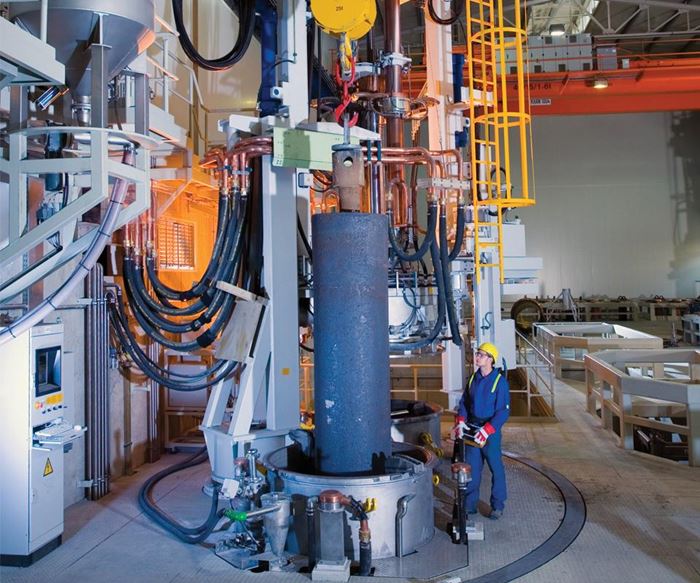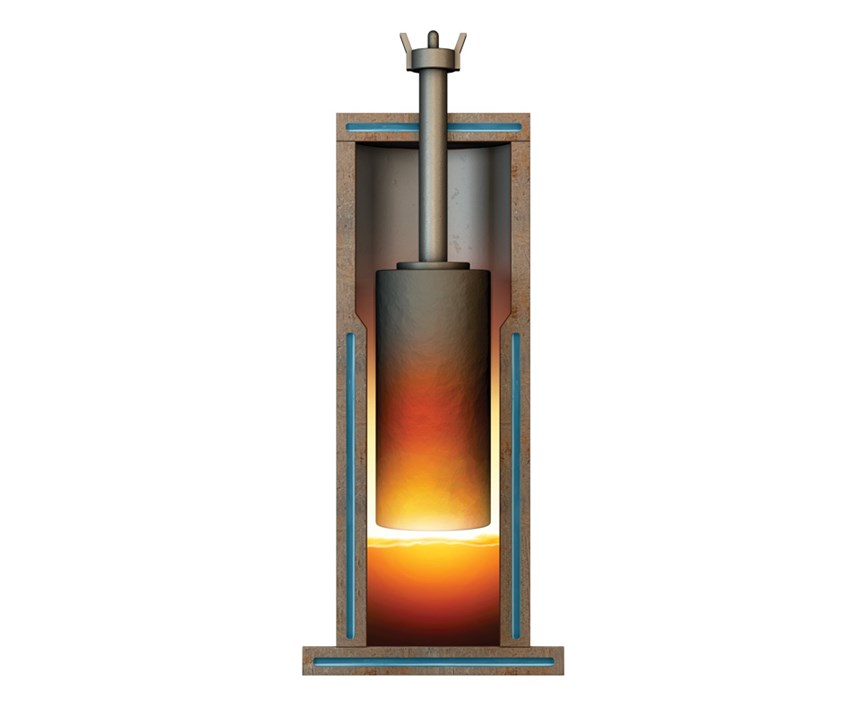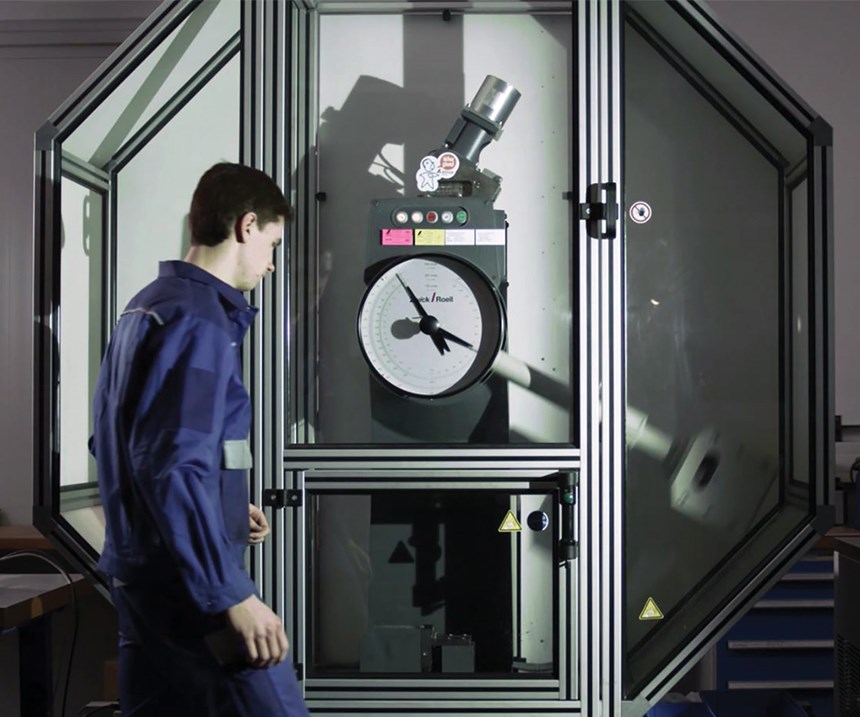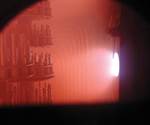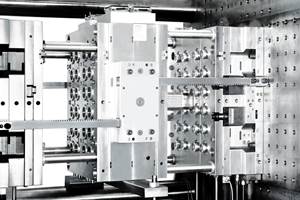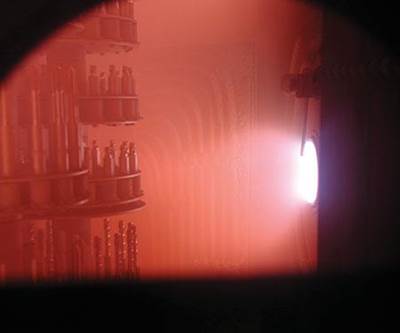Defining Mold Steel Toughness
Consider grades that have undergone the electroslag remelting process.
There are many considerations that a designer and moldmaker must balance when selecting a tooling material that will meet or exceed expectations during operation. The part geometry, mold size, polishability requirements and length of the production run all play a role in this decision. An additional concern that is frequently mentioned, but not always clearly defined, is the toughness level of the mold steel.
A grade of mold steel with a high toughness level will reduce the likelihood of crack formation and/or propagation should a crack develop. Challenging designs that require thick-to-thin wall transitions, relatively sharp radii or other highly stressed areas will benefit from using an inherently tough mold steel. It essentially provides for an additional level of safety during operation, avoiding unplanned maintenance and downtime.
Measuring the Toughness Level
The toughness level of a mold steel is determined by a standardized impact test that outlines the sample preparation and test procedure (for example, ASTM A370). The process begins with the tester cutting a sample coupon from the end of a bar or block of mold steel, noting its orientation to the primary rolling or forging direction. Further sectioning and machining of this coupon is carried out to create multiple samples according to specified dimensions. These samples are also heat treated to a hardness level that is representative of the same working hardness range used by the mold during service.
Once prepared, the sample is positioned within a fixture and a pendulum is released from a specific height. As the pendulum strikes and then fractures the sample, it continues to travel on its upward swing. The height it reaches depends on how much energy the sample absorbed. A steel grade that exhibits a relatively high toughness level will absorb significant amounts of energy, thereby reducing the height to which the pendulum climbs.
The instrument will record the amount of energy absorbed by the sample in terms of foot-pounds (imperial units) or as joules (metric units). The greater the value measured, the greater the toughness level of the steel. It should be noted there may be variations in how the test samples are prepared, however, a common method involves grinding a small, V-shaped notch perpendicular to the length direction of the sample and oriented vertically during testing. The pendulum strikes the side opposite the notch, fracturing the sample at this pre-determined location. This test is referred to as a Charpy V-Notch (CVN) test.
There are many variations with regards to the sample preparation, including the use of unnotched test specimens. When reviewing data, make sure you are always comparing values that were collected from samples prepared in a similar manner.
Factors Affecting Toughness
There are two primary factors that affect toughness levels. One is the homogeneity of the steel, which is the level of banding or segregation of the alloying elements and/or alloy carbides. The other is micro-cleanliness, which is the amount of undesirable, non-metallic inclusions (NMI).
Once the primary melting and ladle metallurgy processes have been completed, the molten steel is cast into ingots. The high melt temperature and the large volume of molten steel poured into each ingot mold results in a relatively slow solidification rate. As the ingot solidifies from the surface towards the core, the nature of the process results in alloy segregation. Essentially, this is a variation in the steel’s chemical composition throughout the cross section of the ingot.
This alloy segregation may be alleviated to some degree in the production cycle by adding an annealing process that will promote diffusion and also during the mechanical working that occurs during the forging and/or rolling processes. That is, as the ingot is mechanically worked into its final dimensions as a plate, bar, flat and so on, the carbide and alloy networks are broken down and more uniformly dispersed. The degree of forging and rolling plays a major role in providing for a homogeneous material.
To improve homogeneity and the microstructure of the steel, and to minimize the level of non-metallic inclusions, an additional step in the manufacturing process of the mold steel known as electroslag remelting (ESR), or a more advanced variation known as protective/pressurized electroslag remelting (PESR), may be implemented.
Electroslag remelting. The ESR process takes the initially cast ingot and remelts it under very controlled conditions. One end of an as-cast ingot is welded to a fixture and held vertically above a mold containing a molten slag bath. The remelting is initiated when the end of the electrode is brought into proximity with the molten slag. The heat of the slag will begin to melt the ingot, creating droplets of molten steel. Since the molten steel has a higher density than the slag, it will fall downward and pass through it, collecting at the bottom of the mold, where it will quickly resolidify.
During this process, the portion of the remelted ingot that is in the liquid state is relatively small. The result is faster solidification rates and, thereby, a lower amount of alloy segregation and banding. The chemical composition will be more consistent throughout the cross section of the ESR ingot. In addition, the alloy carbides that form are likely to be relatively small and uniformly distributed.
An added benefit of the ESR process is that the slag bath will extract tramp elements such as sulfur from the melt as each molten droplet of steel passes through it. The process can reduce sulfur to levels of 0.003 percent or lower, reducing the amount of non-metallic inclusions formed upon solidification. The ESR process helps ensure a high level of micro-cleanliness. The lack of brittle sulfide particles within the matrix of the steel greatly improves toughness properties as well as the ability to polish the mold steel to a high surface finish.
Consider mold steel grades that have undergone the additional refinement provided by the ESR process. Increased toughness levels and crack resistance; a consistent, uniform response to etching/texturing processes; and the ability to achieve a lens-quality surface finish during polishing are major benefits.
Related Content
How to Lower Cycle Times With the Right Tool Steel
Combining excellent mechanical properties, high wear resistance and high thermal conductivity in a specialty tool steel yields cycle time reduction.
Read MoreReliable, Efficient 3D Printer for High-Quality Tool Steel Components
The updated TruPrint 2000 underscores Trumpf’s focus on the tool and die industry, including a larger, square build plate and various features to ensure high quality and mass production.
Read MoreCoating Technology Enables Tough Mold and Die Steel Machining
Millstar, a part of Cole Tooling Systems, presents a multi-layer hybrid nanocoating for cutting tools that provide key benefits for increased efficiency in any machining operation.
Read MoreVIDEO: Innovative Materials Boost Mold Efficiency
Advancements in metal 3D printing and stainless steel optimize mold building for diverse, high-demand industries.
Read MoreRead Next
PVD Coatings and Tool Steel Selection
Mold users are driving an increased use of physical vapor deposition (PVD) coatings, and this has generated questions and concerns from mold builders as they select materials from which to manufacture their molds. PVD coatings are a family of very thin (approximately 2 to 5 microns) metal layers applied in a vacuum chamber using a plasma process.
Read MoreHow to Use Strategic Planning Tools, Data to Manage the Human Side of Business
Q&A with Marion Wells, MMT EAB member and founder of Human Asset Management.
Read MoreReasons to Use Fiber Lasers for Mold Cleaning
Fiber lasers offer a simplicity, speed, control and portability, minimizing mold cleaning risks.
Read More
